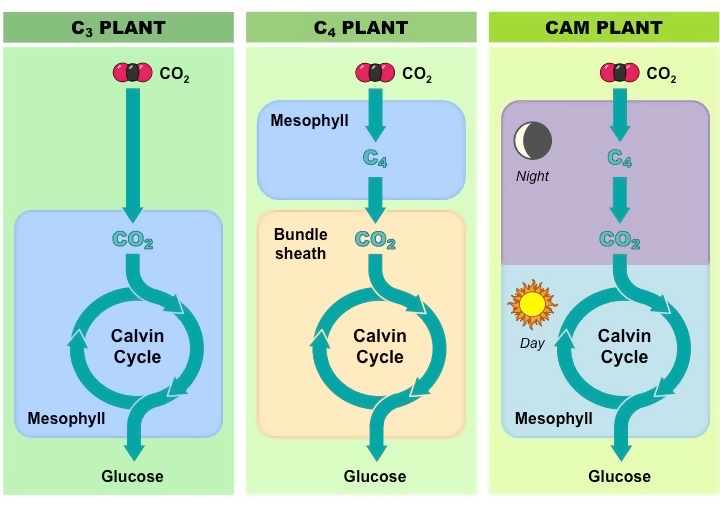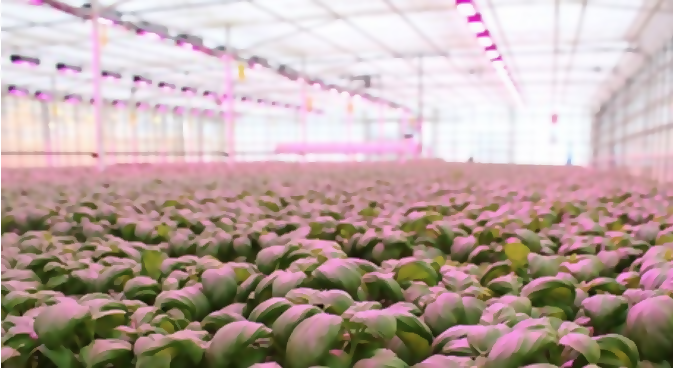October 14, 2020 at 4:02 am | Updated March 14, 2022 at 1:13 pm | 6 min read
Photosynthesis Update 2019
Photosynthesis is undoubtedly one of the most important physiological processes on Earth. It is the process by which plants, algae, and bacteria produce food. Photosynthesis makes these organisms the primary producers of the earth, as all other organisms feed on them for their energy source. People depend on this important process for most of their needs: food, fiber, fuel, timber, etc. Also, many scientists are considering photosynthesis to increase the uptake of carbon dioxide to combat climate change.
What is Photosynthesis?
Photosynthesis is the process by which organisms with chlorophyll capture light and use its energy to combine water and carbon dioxide (CO2) to produce simple carbohydrates and oxygen. There are two stages in the process:
- The first step, CO2 fixation, is a light-dependant stage.
- The second step is the light-independent stage where NADPH and ATP produced in the first stage is used to form carbohydrates in the Calvin Cycle.
There are three kinds of plants depending on photosynthesis: C3, C4 and crassulacean acid metabolism (CAM).
Subscribe to the CID Bio-Science Weekly article series.
By submitting this form, you are consenting to receive marketing emails from: . You can revoke your consent to receive emails at any time by using the SafeUnsubscribe® link, found at the bottom of every email. Emails are serviced by Constant Contact
C3 Plants
If the end product is a three-carbon compound, the plants are called C3. Both stages of photosynthesis occur in the same chloroplast. During hot or dry weather, when the stomata remain closed, photorespiration occurs. Oxygen produced by photosynthesis reacts with the photosynthetic enzyme, Rubisco, hindering the production of C3 carbohydrates. Thus, the efficiency of water-use and photosynthesis can be low in C3 plants. Examples of C3 plants are rice, wheat, soybeans, and all trees; 85% of plants are C3.
C4 Plants
In hot and dry places, plants, which often keep stomata closed, have evolved a different system to use the limited amount of CO2 coming in. CO2 is fixed in the stomata of the mesophyll to produce C4 carbohydrates, which is transported to the chloroplast of another cell in the sheath for the Calvin Cycle to escape photorespiration. Examples of C4 plants are sorghum, maize, ragi, switchgrass, etc.
CAM Plants
In places with extreme heat and drought, like deserts, plants open their stomata only in the night, when CO2 can enter. So, in these plants, CO2 is fixed in the night and stored in a vacuole. In the day, the Calvin Cycle occurs in the same chloroplast and avoids photorespiration. Examples are succulents such as cacti.
Bacteria have no organelles but do have chlorophyll that aids the two steps of photosynthesis. Also, there are sulphur bacteria which use hydrogen sulphide as the hydrogen source for their photosynthesis.

The different photosynthetic pathways in plants. (Image credits:
https://ib.bioninja.com.au/higher-level/topic-8-metabolism-cell/untitled-2/c3-c4-and-cam-plants.html)
New Discoveries
Though photosynthesis is important, many of its aspects and reactions are still unknown. Not surprisingly, scientists are trying to learn more about it to solve the many challenges facing us today.
New Kind of Photosynthesis
Photosynthesis in many cyanobacteria (blue-green algae) uses near infrared light by chloroplast f, instead of red of the visible light, and can take place in dark or shaded places. Light beyond the red spectrum of light can damage plants. A deeper study into how the cyanobacteria avoid this damage can help in producing new kinds of crop plants.
Knowledge of this new photosynthesis can widen the scope of places to search for alien life in distant planets.
Artificial Photosynthesis
Scientists are using the chemicals associated with photosynthesis and charging them with electrical energy in a solar cell. The cells fix CO2 to produce fuels like methanol at micro-levels. Attempts are being made to scale-up carbon capture through this novel method.
Understanding Photosynthesis Reactions
Earlier photo-inhibition of photosystem-I or damage due to excessive exposure to sunlight was considered harmful for the productivity of the plant and crop yield. A Finnish group has shown that photo-inhibition of photosystem-I can lessen damages to the photosystem-II and also contain further damage to itself. A better understanding of processes helps in targeting future research to boost crop yield.
Optimizing Photosynthesis for Energy Production by Algae
Research is being conducted on the use of microalgae for the production of next generation solar biotechnologies. Photosynthesis uses either a linear electron flow or cyclic electron flow (CEF) depending on changing light conditions. A large compound has now been identified as the CEF complex that plays a major role in fine-tuning the balance of these two processes. The complex found in micro-algae and plants has remained unchanged for millions of years and has been used to adapt to varying light and energy levels. By understanding how micro-algae optimize photosynthesis, their production can be increased to supply more energy and food.
Improving Crop Yield
With the human population rising steeply, scientists are looking for ways to improve plant yield, besides experimenting with fertilizer and irrigation use efficiency. They are looking deeper into plants, especially at photosynthesis. Some of the new approaches to increasing crop growth and yield are covered below.
Improving Light Storage
Plants use only 1% of the sunlight that falls on them. Photosystem I and II, which are involved in the absorption of light, are therefore subsets of photosynthetic reactions that are of great interest. Scientists aim to understand these complex and little known processes in the hope of increasing light storage by just another 1% to produce enough food, fuel, and energy for all people.
Reducing Photorespiration
C3 plants which suffer from photorespiration can be improved to increase growth and produce more. This has been successfully attempted through genetic engineering in a new variety of tobacco. The result was a 40% increase in plant growth due to more photosynthesis. Rice and wheat could see similar applications.
Improving Greenhouse Production
Growers of fruits, vegetables, and flowers seek to improve the rate of photosynthesis in greenhouses by using LEDs with customised light colour and intensity for each species. Combinations of red and blue lights are primarily used to improve light absorption and plant growth.

Growing herbs with LEDs (Image credits: https://urbanagnews.com/blog/news/quality-improvement-and-electricity-savings-thanks-to-led/)
Increasing Rubisco Content
One of the methods increases the amount of the enzyme Rubisco in C4 plants to raise CO2 fixation and improve plant growth and yield has proved successful in maize.
Predicting Climate Change Effect on Food Production
Many people associate increasing CO2 levels due to climate change with the potential for increased food yield, but it is not that simple. Since C4 are already adapted to use more CO2, increased levels of this gas will have no effect on them or increase their yield. However, under conditions of higher CO2, more photosynthesis will occur in C3 plants such as rice and wheat.
Impact of Climate Change on Photosynthesis
The many components and environment that are important for photosynthesis come into play during climate change and its ability to fix carbon.
- Temperature: The optimum range of temperature for photosynthesis is 10 – 35°С. Beyond this range, all photosynthetic reactions are affected and the assimilation of CO2 decreases. Since there are many subsets of reactions and compounds involved, it will be hard to find ways to reverse adverse effects to photosynthesis by raising temperatures.
- Carbon dioxide: Intensity of photosynthesis is expected to peak when CO2 levels are 0.8 -1.0%. As the current atmospheric CO2 level is ≈ 0.038%, plants are expected to absorb and fix more CO2.
However, when temperatures and CO2 levels increase simultaneously, there is more respiration than photosynthesis. So, forests will act as carbon sinks only in wet years and periods. In drier periods of the year, they can produce more CO2.
How to Measure Photosynthesis
The increased interest in photosynthesis to improve crop yield and mitigate climate change requires precise measurement of this important physiological process. The CI-340 Handheld Photosynthesis System from CID Bio-Science provides instant and accurate readings. They can be used to measure all kinds of leaves from conifers to broadleaves in farms, laboratories, and natural ecosystems.
—
—
Vijayalaxmi Kinhal
Science Writer, CID Bio-Science
Ph.D. Ecology and Environmental Science, B.Sc Agriculture
Sources
Academy of Finland. (2016, March 24). Reaction previously believed detrimental for photosynthesis proves to be beneficial. Retrieved from https://phys.org/news/2016-03-reaction-previously-believed-detrimental-photosynthesis.html
Beekwilder, M.J. Artificial photosynthesis. Wageningen University and Research. Retrieved from https://www.wur.nl/en/project/Artificial-photosynthesis.htm
C3 and C4 photosynthesis. (2018, January 11). InTeGrate. Retrieved from https://serc.carleton.edu/integrate/teaching_materials/food_supply/student_materials/1167
Imperial College London. (2018, June 14). New type of photosynthesis discovered. ScienceDaily. Retrieved from www.sciencedaily.com/releases/2018/06/180614213608.html
Mueller-Cajar, O., (2018). Overexpressing the most abundant enzyme.
Nature Plants, 4, 746–747. https://www.nature.com/articles/s41477-018-0268-9
Photosynthesis: Comparing C3, C4, and CAM. (2017, Dec 1). RicochetScience. Retrieved from https://www.youtube.com/watch?reload=9&v=13h5oC4jIsk
Photosynthesis of greenhouse-grown strawberry plants. Wageningen University and Research. Retrieved from https://www.wur.nl/en/Research-Results/kennisonline/Photosynthesis-of-greenhouse-grown-strawberry-plants.htm
Temming, M. (2019, January 3). A new way to genetically tweak photosynthesis boosts plant growth. Science News. Retrieved from https://www.sciencenews.org/article/new-way-genetically-tweak-photosynthesis-boosts-plant-growth
The Calvin Cycle. Retrieved from http://hyperphysics.phy-astr.gsu.edu/hbase/Biology/calvin.html
Tkemaladze, G. S., & Makhashvili, K.A. (2016). Climate changes and photosynthesis. Annals of Agrarian Science, 14, 119-126. https://doi.org/10.1016/j.aasci.2016.05.012
University of Queensland. (2018, September 24). Photosynthesis discovery could help next-gen biotechnologies. ScienceDaily. Retrieved from www.sciencedaily.com/releases/2018/09/180924174454.html
Related Products
Most Popular Articles
- Transpiration in Plants: Its Importance and Applications
- Leaf Area – How & Why Measuring Leaf Area…
- How to Analyze Photosynthesis in Plants: Methods and Tools
- The Forest Canopy: Structure, Roles & Measurement
- Plant Respiration: Its Importance and Applications
- Forest & Plant Canopy Analysis – Tools…
- Stomatal Conductance: Functions, Measurement, and…
- Root Respiration: Importance and Applications
- The Importance of Leaf Area Index (LAI) in…
- Irrigating with Saline or Seawater






